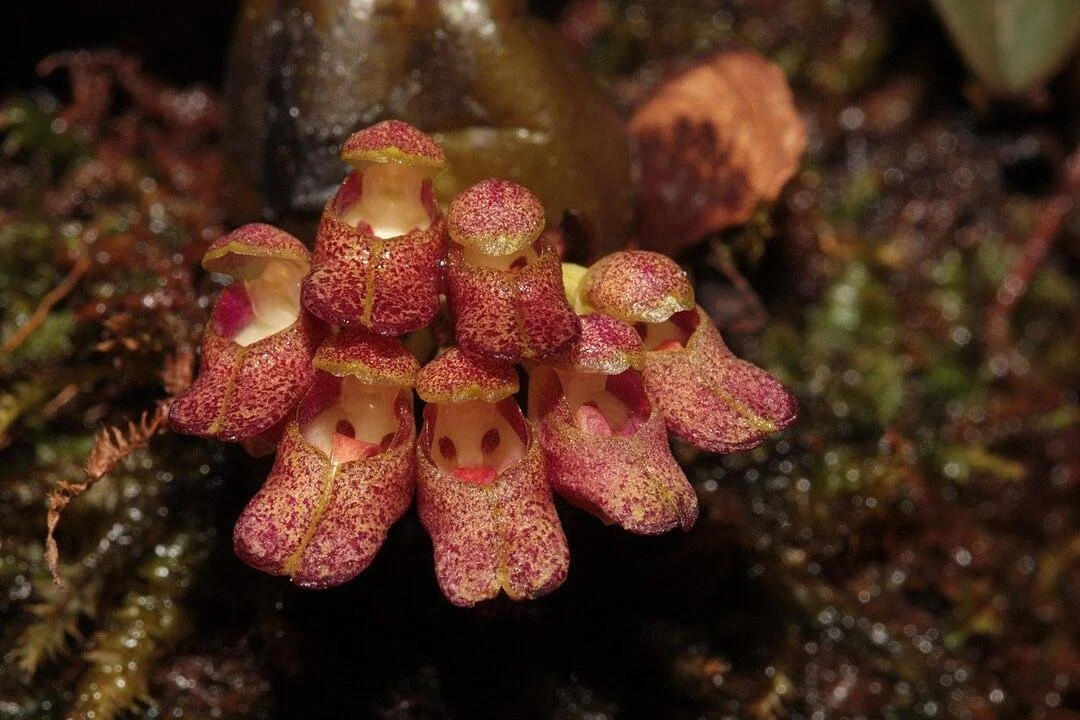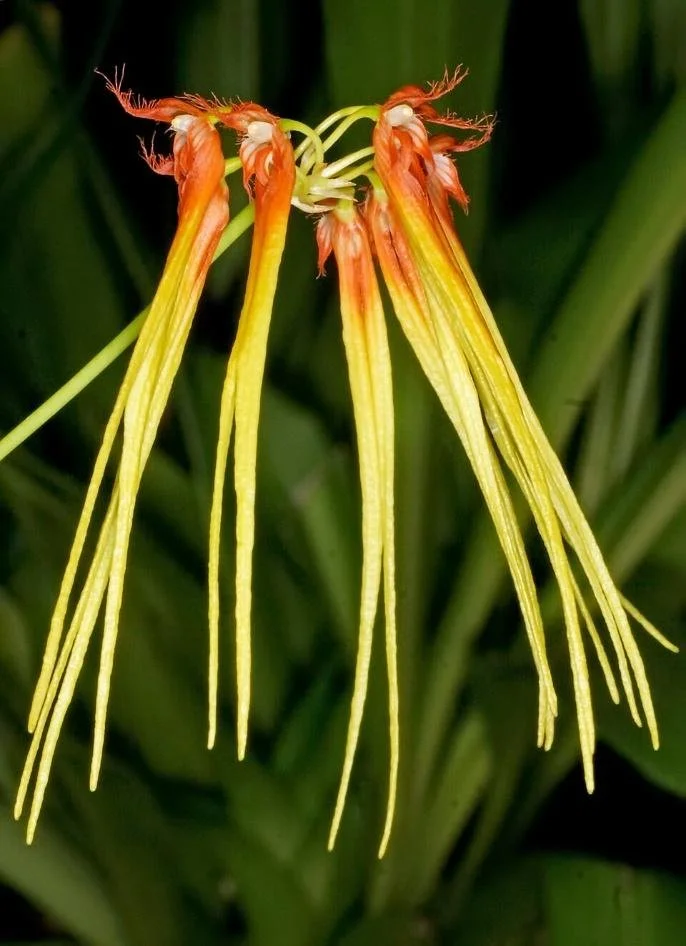A New Game: Orchid or Pokémon Character?
Bulbophyllum socordine (Photo credit: Raabbustamante via Wikimedia, CC BY-SA 4.0)
Orchids are all about unexpected joys. Today’s is getting to reference a Pokémon character in an orchid post, a first (and possibly last, but who knows—we are talking about orchids, after all) for this blog.
Behold the Bulbophyllum genus of orchids. Perhaps because it’s the biggest genus (over 2,200 species), they’re among the strangest, smelliest, alien-looking orchids out there—and that’s saying something, given how magnificently diverse and often bizarre orchids are. In a previous post we featured the medusa orchid, a type of bulbophyllum, but in hindsight it seems wrong to overlook the other gloriously weird bulbos out there. Many species remind me of Bulbasaur, the amphibious Pokemon that carries a growing bulb on its back.
Bulbasaur (art credit: Mythka, Deviant Art CC 3.0)
Bulbophyllum orchids come from all over the world, including Latin America, southern Asia, Africa, the West Indies, and other Pacific and Indian Ocean islands. These orchids are epiphytic (grow on trees) and/or lithophytic, which means they can grow on rocks thanks to their clingy, fiber-like roots. As their name suggests, bulbophyllum orchid stems have a pseudobulb and a rhizome, and they usually grow only one leaf from the former.
Bulbophyllum andersoni bloom (Photo credit: 阿橋花譜 HQ Flower Guide, Wikimedia, CC-by-SA-2.0)
Most bulbophyllum species have lower light needs than other orchids. A north-facing window or even ambient light for 2-3 hours per day is usually enough. In greenhouses or south-facing windows, it’s common to see them covered by shade clothes. Grow lights tend to work well. These orchids like it warm or even hot (up to 90 degrees Fahrenheit).
As with most orchids, their native rainforest habitat dictates their water needs. They like humidity and don’t want to dry out (thus, you might want to stay away from terracotta pots). Basically, they like my least favorite weather: hot and muggy, like Boston in August. Air circulation is important, as high and constant humidity levels can encourage fungi.
Bulbophyllum hirundinis (Photo credit: Orchi, Wikimedia, CC BY-SA 3.0)
One more noteworthy detail about bulbophyllums: they tend to smell terrible. Apparently, the bulbophyllum phalaenopsis, which looks nothing like the other bulbos or any phalaenopsis I’ve ever seen, is particularly stinky. It’s pollinated by female carrion flies and its smell has evolved to lure them in. An early description likens the smell of its blossoms to that of “a thousand dead elephants rotting in the sun."
Who could resist?!
Bulbophyllum phalaenopsis bloom (photo credit: C.T. Johansson, Wikimedia, CC BY-SA 3.0)





